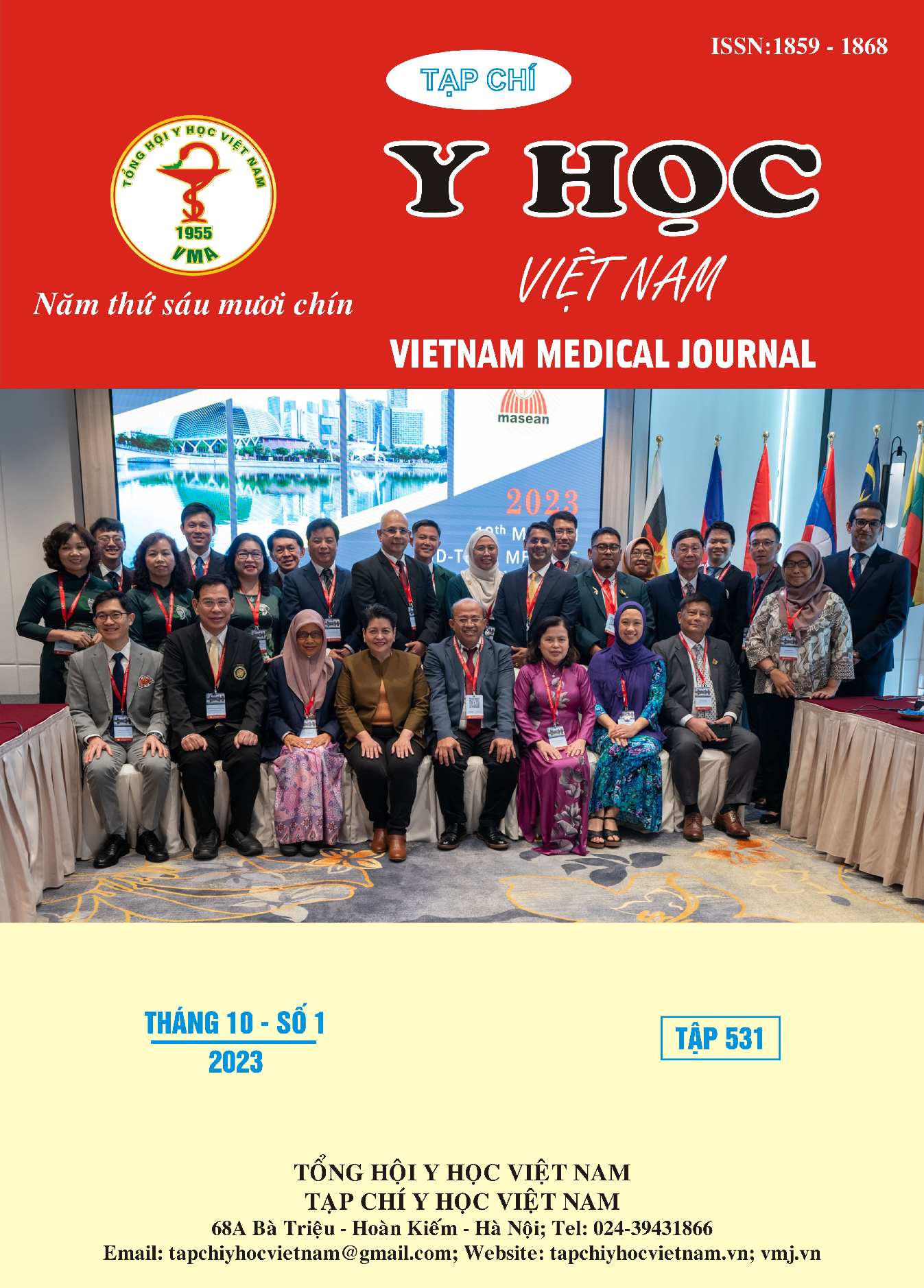PREVALENCE OF SARCOPENIA IN PATIENTS WITH CHRONIC ISCHEMIC HEART DISEASE
Main Article Content
Abstract
Objective: to evaluate the frequency of sarcopenia and the relationship between sarcopenia and some clinical and laboratory features in patients with chronic ischemic heart disease. Methods: A cross-sectional prospective study in patients with chronic ischemic heart disease, admitted to the Interventional Cardiology Department, Military Hospital 103 from April 2022 to October 2022. Diagnosis of sarcopenia is based on muscle mass, strength, and physical performance, according to the consensus of the Asian Working Group for Sarcopenia 2019 (AWGS 2019). General information and clinical and laboratory characteristics of the study subjects were also collected. Results: The study sample consisted of 52 patients with an average age of 66.4 ± 10.2 years old. The frequency of sarcopenia, severe sarcopenia and sarcopenic-obesity was 36.5%, 32.7% and 1.9%, respectively. Sarcopenia is more common in men, with advanced age. Patients with sarcopenia most of the anthropometric indices were lower than those without sarcopenia, the difference was significant in waist circumference, hip circumference, mid-arm circumference, calf circumference. Conclusion: Prevalence of sarcopenia in patients with chronic ischemic heart disease was high. Futher studies with larger samples, studying the impact of sarcopenia on clinical outcomes in patients with cardiovascular disease in general and chronic ischemic heart disease in particular are needed.
Article Details
Keywords
Sarcopenia, chronic ischemic heart disease
References
2. Roth Gregory A, Mensah George A, Johnson Catherine O et al. (2020), "Global burden of cardiovascular diseases and risk factors, 1990–2019: update from the GBD 2019 study", Journal of the American College of Cardiology 76(25), pp. 2982-3021.
3. Santana Natália De Moraes, Mendes Roberta Maria Lins, Silva Nadja Fernandes Da et al. (2019), "Sarcopenia and sarcopenic obesity as prognostic predictors in hospitalized elderly patients with acute myocardial infarction", Einstein (Sao Paulo) 17
4. Bekfani Tarek, Pellicori Pierpaolo, Morris Daniel A et al. (2016), "Sarcopenia in patients with heart failure with preserved ejection fraction: Impact on muscle strength, exercise capacity and quality of life", International journal of cardiology 222 (pp. 41-46.
5. Chen Liang-Kung, Woo Jean, Assantachai Prasert et al. (2020), "Asian Working Group for Sarcopenia: 2019 consensus update on sarcopenia diagnosis and treatment", Journal of the American Medical Directors Association 21(3), pp. 300-307. e2.
6. Baumgartner Richard N, Koehler Kathleen M, Gallagher Dympna et al. (1998), "Epidemiology of sarcopenia among the elderly in New Mexico", American journal of epidemiology 147(8), pp. 755-763.
7. Chin Sang Ouk, Rhee Sang Youl, Chon Suk et al. (2013), "Sarcopenia is independently associated with cardiovascular disease in older Korean adults: the Korea National Health and Nutrition Examination Survey (KNHANES) from 2009", PloS one 8(3), pp. e60119.
8. Han Peipei, Yu Hairui, Ma Yixuan et al. (2017), "The increased risk of sarcopenia in patients with cardiovascular risk factors in Suburb-Dwelling older Chinese using the AWGS definition", Scientific reports 7(1), pp. 1-7.
9. Cruz-Jentoft A. J, Baeyens J. P, Bauer J. M et al. (2010), "Sarcopenia: European consensus on definition and diagnosisReport of the European Working Group on Sarcopenia in Older PeopleA. J. Cruz-Gentoft et al", Age and ageing 39(4), pp. 412-423.


